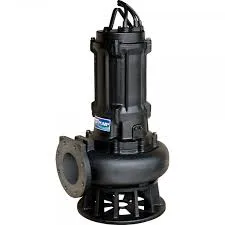Armenian
- Afrikaans
- Albanian
- Amharic
- Arabic
- Armenian
- Azerbaijani
- Basque
- Belarusian
- Bengali
- Bosnian
- Bulgarian
- Catalan
- Cebuano
- Corsican
- Croatian
- Czech
- Danish
- Dutch
- English
- Esperanto
- Estonian
- Finnish
- French
- Frisian
- Galician
- Georgian
- German
- Greek
- Gujarati
- Haitian Creole
- hausa
- hawaiian
- Hebrew
- Hindi
- Miao
- Hungarian
- Icelandic
- igbo
- Indonesian
- irish
- Italian
- Japanese
- Javanese
- Kannada
- kazakh
- Khmer
- Rwandese
- Korean
- Kurdish
- Kyrgyz
- Lao
- Latin
- Latvian
- Lithuanian
- Luxembourgish
- Macedonian
- Malgashi
- Malay
- Malayalam
- Maltese
- Maori
- Marathi
- Mongolian
- Myanmar
- Nepali
- Norwegian
- Norwegian
- Occitan
- Pashto
- Persian
- Polish
- Portuguese
- Punjabi
- Romanian
- Russian
- Samoan
- Scottish Gaelic
- Serbian
- Sesotho
- Shona
- Sindhi
- Sinhala
- Slovak
- Slovenian
- Somali
- Spanish
- Sundanese
- Swahili
- Swedish
- Tagalog
- Tajik
- Tamil
- Tatar
- Telugu
- Thai
- Turkish
- Turkmen
- Ukrainian
- Urdu
- Uighur
- Uzbek
- Vietnamese
- Welsh
- Bantu
- Yiddish
- Yoruba
- Zulu
Telephone: +86 13120555503
Email: frank@cypump.com
Հկտ . 02, 2024 00:01 Back to list
Hydrostatic Testing Pump for Pipeline Integrity Verification and Maintenance Procedures
Pipeline Hydrostatic Test Pump Ensuring Integrity and Safety
The integrity of pipelines is a critical concern in various industries, particularly in oil and gas, water distribution, and chemical processing. One essential method to assess pipeline strength and detect potential leaks is through hydrostatic testing. Central to this process is the hydrostatic test pump, which plays a pivotal role in ensuring the reliability and safety of pipeline operations.
What is Hydrostatic Testing?
Hydrostatic testing involves filling a pipeline with water or another incompressible fluid to a specified pressure, which is typically higher than the normal operating pressure. This test is designed to check for leaks, verify the structural integrity of the pipeline, and ensure that it can withstand pressure fluctuations during operation. The hydrostatic test not only assesses the strength of the material but also helps to identify weak points that may pose safety risks.
The Role of Hydrostatic Test Pumps
Hydrostatic test pumps are specialized devices used to pressurize the fluid used in the testing process. They come in various sizes and capacities, tailored to the specific needs of different pipeline projects. The primary function of the pump is to deliver a consistent, high-pressure flow of water into the pipeline until the desired pressure level is reached.
These pumps are designed with powerful motors and durable materials to withstand the rigorous conditions associated with hydrostatic testing. They can be used for a wide range of applications, from small pipe systems to large industrial pipelines. The effectiveness of a hydrostatic test pump is crucial to the overall success of the testing process, making it an indispensable tool in pipeline integrity verification.
Key Features of Hydrostatic Test Pumps
1. Pressure Regulation Most hydrostatic test pumps are equipped with pressure regulators and gauges that allow operators to monitor the pressure levels accurately. This ensures compliance with testing standards and enhances safety during the procedure.
pipeline hydrostatic test pump

2. Portability Many modern test pumps are designed to be portable, allowing them to be used in various field locations. Their mobility facilitates the testing of pipelines in remote areas, enhancing the versatility of hydrostatic testing.
3. User-Friendly Design The best hydrostatic test pumps come with intuitive controls that simplify the operation process. This is particularly important for operators who need to focus on monitoring the test rather than wrestling with complicated machinery.
4. Durability Hydrostatic test pumps are built to last, often featuring corrosion-resistant materials to withstand harsh environments. This durability ensures that they can handle various conditions without compromising performance.
Importance of Hydrostatic Testing
Hydrostatic testing is not just a regulatory requirement but a critical safety measure. It helps prevent catastrophic failures that can lead to environmental disasters, financial losses, and potential harm to human life. By identifying and addressing weaknesses in pipelines before they become problematic, companies can save time and resources while ensuring community safety.
Furthermore, regular hydrostatic testing contributes to the longevity of pipeline systems. By confirming pipeline integrity, organizations can maintain efficient operations, reduce downtime, and foster trust among stakeholders and regulatory bodies.
Conclusion
In conclusion, hydrostatic test pumps are essential tools for ensuring the integrity and safety of pipelines in various industries. Their role in the hydrostatic testing process cannot be overstated, as they facilitate the detection of leaks and weaknesses that might otherwise go unnoticed. As industries continue to face increasing demands for reliable infrastructure, the importance of effective hydrostatic testing—and, by extension, the hydrostatic test pump—will only grow. Investing in high-quality test pumps and adhering to rigorous testing protocols is a commitment to safety, efficiency, and environmental stewardship.
-
Horizontal Split Case Pump with GPT-4 Turbo | High Efficiency
NewsAug.01,2025
-
ISG Series Pipeline Pump - Chi Yuan Pumps | High Efficiency, Durable Design
NewsAug.01,2025
-
Advanced Flue Gas Desulfurization Pump with GPT-4 Turbo | Durable & Efficient
NewsJul.31,2025
-
ISG Series Vertical Pipeline Pump - Chi Yuan Pumps | Advanced Hydraulic Design&Durable Construction
NewsJul.31,2025
-
ISG Series Vertical Pipeline Pump - Chi Yuan Pumps | Energy Efficient & Low Noise
NewsJul.31,2025
-
pipeline pump - Chi Yuan Pumps Co., LTD.|High Efficiency&Low Noise
NewsJul.31,2025










